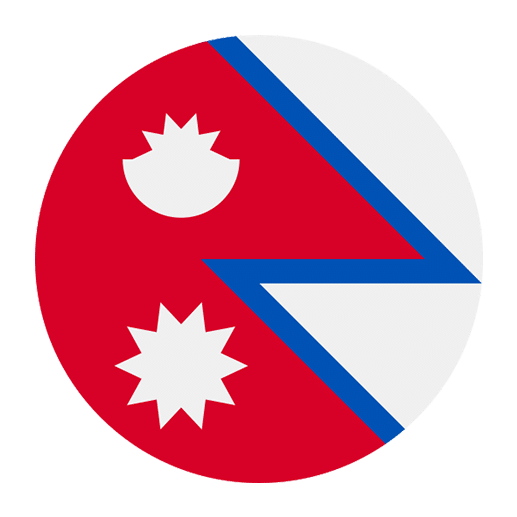Nepali, the official language of Nepal, is a rich and vibrant language spoken by millions of people not only in Nepal but also in parts of India, Bhutan, and Myanmar. Like all languages, adjectives play a crucial role in Nepali, helping to describe and modify nouns, thereby adding depth and detail to communication. Understanding and using common Nepali adjectives can significantly enhance your ability to speak and comprehend the language. This article will explore some of the most frequently used adjectives in Nepali, their meanings, and how to use them effectively in sentences.
Introduction to Nepali Adjectives
Adjectives in Nepali, much like in English, are used to describe the qualities of a noun. They can describe size, color, shape, age, and many other characteristics. In Nepali, adjectives generally precede the nouns they modify and agree with the gender and number of the noun. For example, the word for “big” is ठूलो (thulo), which can be used as follows:
– ठूलो घर (thulo ghar) – big house
– ठूलो कुकुर (thulo kukur) – big dog
However, unlike some languages, Nepali adjectives do not change form based on the gender of the noun they describe. This makes learning adjectives relatively straightforward once you grasp the basics.
Common Nepali Adjectives
Let’s delve into some common Nepali adjectives and explore their meanings and usage.
1. ठूलो (Thulo) – Big
As mentioned earlier, ठूलो (thulo) means “big.” It is used to describe something of large size or magnitude.
Examples:
– ठूलो रूख (thulo rookh) – big tree
– ठूलो समस्या (thulo samasya) – big problem
2. सानो (Sano) – Small
सानो (sano) means “small.” It is the opposite of ठूलो (thulo).
Examples:
– सानो बच्चा (sano bachcha) – small child
– सानो घर (sano ghar) – small house
3. राम्रो (Ramro) – Good/Beautiful
राम्रो (ramro) is a versatile adjective meaning “good” or “beautiful.” It is used to describe both quality and aesthetics.
Examples:
– राम्रो खाना (ramro khana) – good food
– राम्रो फूल (ramro phool) – beautiful flower
4. नराम्रो (Naramro) – Bad
नराम्र (naramro) means “bad.” It is used to describe something of poor quality or unfavorable.
Examples:
– नराम्रो मौसम (naramro mausam) – bad weather
– नराम्रो विचार (naramro bichar) – bad idea
5. नयाँ (Naya) – New
नयाँ (naya) means “new.” It is used to describe something that is recent or modern.
Examples:
– नयाँ कपडा (naya kapda) – new clothes
– नयाँ कार (naya car) – new car
6. पुरानो (Purano) – Old
पुरानो (purano) means “old.” It is used to describe something that has been around for a long time.
Examples:
– पुरानो पुस्तक (purano pustak) – old book
– पुरानो घर (purano ghar) – old house
7. मिठो (Mitho) – Tasty/Delicious
मिठो (mitho) means “tasty” or “delicious.” It is commonly used to describe food.
Examples:
– मिठो खाना (mitho khana) – delicious food
– मिठो मिठाई (mitho mithai) – tasty sweet
8. तातो (Tato) – Hot
तातो (tato) means “hot.” It can describe temperature in terms of weather or food.
Examples:
– तातो पानी (tato pani) – hot water
– तातो दिन (tato din) – hot day
9. चिसो (Chiso) – Cold
चिसो (chiso) means “cold.” It is used to describe low temperature.
Examples:
– चिसो हावा (chiso hawa) – cold wind
– चिसो पानी (chiso pani) – cold water
10. बलियो (Baliyo) – Strong
बलियो (baliyo) means “strong.” It is used to describe physical strength or robustness.
Examples:
– बलियो मान्छे (baliyo manchhe) – strong person
– बलियो घर (baliyo ghar) – strong house
11. कमज़ोर (Kamzor) – Weak
कमज़ोर (kamzor) means “weak.” It is used to describe lack of strength or frailty.
Examples:
– कमज़ोर मान्छे (kamzor manchhe) – weak person
– कमज़ोर स्थिति (kamzor sthiti) – weak situation
Usage of Adjectives in Sentences
Using adjectives effectively requires understanding their placement and agreement with the nouns they describe. In Nepali, adjectives typically precede the noun. Here are some example sentences to illustrate:
1. यो ठूलो रूख हो। (Yo thulo rookh ho.) – This is a big tree.
2. त्यो सानो बच्चा छ। (Tyo sano bachcha cha.) – That is a small child.
3. मैले राम्रो खाना खाएँ। (Maile ramro khana khaye.) – I ate good food.
4. मौसम नराम्रो छ। (Mausam naramro cha.) – The weather is bad.
5. उसले नयाँ कार किन्यो। (Usle naya car kinyo.) – He/she bought a new car.
6. पुरानो पुस्तक रोचक छ। (Purano pustak rochak cha.) – The old book is interesting.
7. यो मिठो मिठाई हो। (Yo mitho mithai ho.) – This is a tasty sweet.
8. तातो पानी दिनुहोस्। (Tato pani dinuhos.) – Please give me hot water.
9. चिसो हावा चलिरहेको छ। (Chiso hawa chaliraheko cha.) – The cold wind is blowing.
10. उसले बलियो मांसपेशी छ। (Usle baliyo manspesi cha.) – He/she has strong muscles.
11. त्यो मानिस कमज़ोर छ। (Tyo manis kamzor cha.) – That person is weak.
Comparative and Superlative Forms
In Nepali, comparative and superlative forms of adjectives are created similarly to English. The word “अझै” (ajhai) is often used to denote “more” for the comparative form, and “सबैभन्दा” (sabaibhanda) is used for the superlative form, meaning “the most.”
Examples:
Comparative:
– यो घर त्यो घर भन्दा ठूलो छ। (Yo ghar tyo ghar bhanda thulo cha.) – This house is bigger than that house.
– ऊ मलाई भन्दा राम्रो हो। (U malai bhanda ramro ho.) – He/she is better than me.
Superlative:
– यो सबैभन्दा ठूलो रूख हो। (Yo sabaibhanda thulo rookh ho.) – This is the biggest tree.
– ऊ सबैभन्दा राम्रो हो। (U sabaibhanda ramro ho.) – He/she is the best.
Descriptive Adjectives
Descriptive adjectives provide specific details and characteristics about the noun. Here are a few more common descriptive adjectives in Nepali:
धनी (Dhani) – Rich
– Examples:
– धनी मानिस (dhani manis) – rich person
– धनी परिवार (dhani parivar) – rich family
गरिब (Garib) – Poor
– Examples:
– गरिब किसान (garib kisan) – poor farmer
– गरिब देश (garib desh) – poor country
खुसी (Khusi) – Happy
– Examples:
– खुसी बच्चा (khusi bachcha) – happy child
– खुसी जीवन (khusi jivan) – happy life
दुःखी (Dukhi) – Sad
– Examples:
– दुःखी महिला (dukhi mahila) – sad woman
– दुःखी घटना (dukhi ghatna) – sad event
सफा (Safa) – Clean
– Examples:
– सफा कोठा (safa kotha) – clean room
– सफा कपडा (safa kapda) – clean clothes
फोहोर (Phohor) – Dirty
– Examples:
– फोहोर सडक (phohoor sadak) – dirty street
– फोहोर हात (phohoor hat) – dirty hands
Using Adjectives with Pronouns
Adjectives can also be used with pronouns to provide more information. Here are some examples:
– उनी राम्रो छन्। (Uni ramro chan.) – They are good.
– तपाईँको किताब नयाँ छ। (Tapainko kitab naya cha.) – Your book is new.
– उसको घर सफा छ। (Usko ghar safa cha.) – His/her house is clean.
Expanding Vocabulary with Synonyms and Antonyms
Learning synonyms and antonyms can help expand your vocabulary and improve your descriptive abilities. Here are a few examples:
Synonyms:
– ठूलो (thulo) – विशाल (vishal) – large
– राम्रो (ramro) – सुन्दर (sundar) – beautiful
Antonyms:
– ठूलो (thulo) – सानो (sano) – big/small
– राम्रो (ramro) – नराम्रो (naramro) – good/bad
Practice Makes Perfect
The key to mastering the use of Nepali adjectives is practice. Try to incorporate these adjectives into your daily conversations and written exercises. Here are a few practice sentences to get you started:
1. यो कुकुर ठूलो छ। (Yo kukur thulo cha.) – This dog is big.
2. त्यो सानो किताब छ। (Tyo sano kitab cha.) – That is a small book.
3. मैले मिठो खाना खाएँ। (Maile mitho khana khaye.) – I ate delicious food.
4. यो पुरानो क्यामेरा हो। (Yo purano camera ho.) – This is an old camera.
5. मौसम तातो छ। (Mausam tato cha.) – The weather is hot.
By regularly using these adjectives, you will become more comfortable with their meanings and applications, thereby enhancing your overall proficiency in Nepali.
In conclusion, understanding and using common Nepali adjectives is an essential step in mastering the language. These adjectives will not only help you describe objects and people more accurately but also enrich your conversations and writings. With practice and dedication, you will be able to use these adjectives naturally and effectively, making your Nepali communication more vibrant and expressive. Happy learning!

